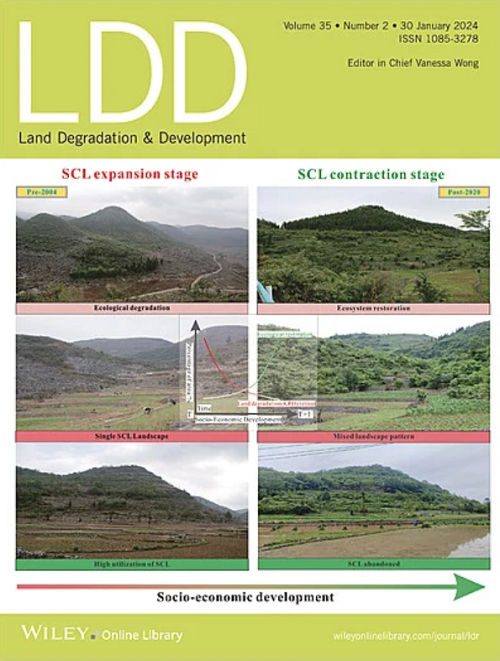Historical Variation in Carbon Fractions in Permafrost Peatland and Its Effects on Peatland Carbon Pool
IF 3.6
2区 农林科学
Q2 ENVIRONMENTAL SCIENCES
引用次数: 0
Abstract
Permafrost peatlands store high amount of soil carbon. These developed on permafrost layers, which are being endangered increasingly by climate change and wildfires. However, limited data exist on the variation in carbon fractions and their effects on the stability of permafrost peatland carbon pools, despite that carbon fractions are widely used in other ecosystems. Here, we considered that peat soils consist of undecomposed plant litter and separated these into five carbon fractions: macro plant residue carbon (MPRC), coarse particulate organic carbon (cPOC), free particulate organic carbon (fPOC), occluded particulate organic carbon (oPOC), and mineral-associated organic carbon (MAOC). We analyzed the historical variation in these fractions over the past 700 years and their effects on the carbon pool in the Hongtu peatland (HT, northern Great Khingan Mountains, China). Our results showed that MPRC comprised 66.7% ± 7.6% of the carbon pool, whereas oPOC and MAOC accounted for less than 1%. Notably, fPOC, which represented 15.6% ± 6.5% of the total carbon, had a high aromatic content. It may serve as an important stable carbon fraction for the peatland carbon pool. Over the past 700 years, the decrease in proportion of MPRC and increase in proportions of cPOC and fPOC have resulted in significant increases in both carbon content and aromaticity. Warm/dry conditions and high-intensity fires reduced the accumulation rates (ARs) of MPRC while increasing those of fPOC and cPOC. The high organic carbon content in the HT peatland limited the availability of mineral elements and resulted in MAOC ARs of approximately 0.01 g m−2 yr−1. This was strongly influenced by the regional dust deposition. Cold climates and intense fires caused an increase in dust deposition, which also increased the MAOC ARs.求助全文
约1分钟内获得全文
求助全文
来源期刊

Land Degradation & Development
农林科学-环境科学
CiteScore
7.70
自引率
8.50%
发文量
379
审稿时长
5.5 months
期刊介绍:
Land Degradation & Development is an international journal which seeks to promote rational study of the recognition, monitoring, control and rehabilitation of degradation in terrestrial environments. The journal focuses on:
- what land degradation is;
- what causes land degradation;
- the impacts of land degradation
- the scale of land degradation;
- the history, current status or future trends of land degradation;
- avoidance, mitigation and control of land degradation;
- remedial actions to rehabilitate or restore degraded land;
- sustainable land management.
 求助内容:
求助内容: 应助结果提醒方式:
应助结果提醒方式:


